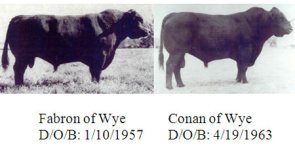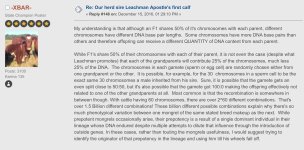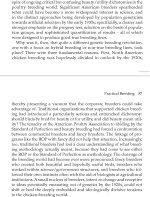librarian
Well-known member
knabe said:pretty sure Leonhardt didn't like outliers. i could be wrong though.librarian said:Leonhardt applied what he realized was going on with hybrid seed development to age old teachings about sorting domestic animals for type, then perpetuating the strongest of that type by isolating them from out crossing. Eventually, he increased environmental pressure and included Darwinian fitness into his criteria for strong or feeble.
I sincerely believe this and do not make the reference in a disrespectful way.
the strongest, the biggest, the smallest the …est of whatever is what he avoided. pretty sure he just liked average. again, could be wrong.
Well gosh,you guys...
Anyway, back to Leonhardt, as he is usually held up as the modern example of linebreeding.
Leonhardt did inbreed his cattle, but he began selecting from a heterogenous gene pool that had been collected from England, Scotland, Ireland and Wales as extreme examples of size and length for their time. Leonhardt consistently crossed two lines, one from Conan of Wye for size and muscle and the other from Fabron of Wye for maternal excellence. He bred a maternal line and a terminal line and an all purpose line from the types he segregated and concentrated from an initial heterogenous gene pool.
So, he began with extreme individuals, then selected for the average of their combined progeny. He didn't try to extend the extreme, he endeavored to build a population of animals that were genetically homogenous (depressed heterosis) in order to replicate the type that worked best in his environment. As was mentioned, after he tightened up his gene pool, he set ego aside and allowed nature to sort fitness in multi sire pastures. However, at that point the competing sires were so similar to the eye that 'a gate cut could sort them as well as any method' (my paraphrase).
So, the debate is about (I guess) composites being the wrong tool to market as a means of introducing Shorthorn genetics into commercial (Angus-ish) herds. An argument has been made that those prominent in the ASA could better serve the breed ( opposed to the interests of a composite breed) by promoting homogeneous, predictable Shorthorn genetics. It's about getting the most predictable Shorthorn genetics in the forefront of commercial marketing, not the least predictable.
But I am in Shorthorns Anonymous now and, one day at a time, try to " mind my own business"



